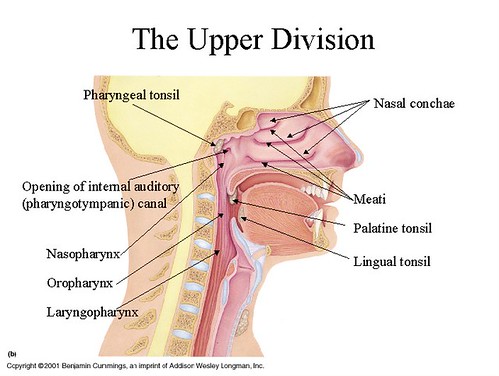| Share Presentation: https://NeoK12.com/pres/ZRESSYS4 | |
The Respiratory Process
| On average, a human breathes over 20,000 times a day. Breathing, or respirations, are necessary for life because the body needs oxygen to survive. When breathing, the respiratory system takes in oxygen (inhale) and brings it into the blood stream to take to all the cells. When you exhale, it is the reverse process and you breathe out carbon dioxide. | ||||
| The respiratory process begins when a person inhales oxygen through their nose or mouth. From there, the oxygen must go through a network of tubes for the body to get it's supply of oxygen. Beginning at the nasal cavity, the air then goes to the pharynx canal which leads it to the larynx, or voice box. From the larynx it goes through the trachea (windpipe). The passageway can be seen in the side picture. | ||||
| After going through the trachea, the oxygen goes into the bronchial tree in the center of your chest. Like this tomato, the bronchial tree begins in the center then branches out. The branches, or bronchioles, are attached to the lungs.Once in the lungs the actual air goes in to small air sacs, called alveoli, similar to the
holes in a sponge.These alveoli are surrounded by capillary walls, and the oxygen dissolves into them; directly into blood flow. The oxygen solution is then absorbed by passing red blood
cells and distributed through the body. | ||||
Share this Presentation: https://NeoK12.com/pres/ZRESSYS4 NeoK12.com - Educational Videos, Lessons, Quizzes & Presentations
NeoK12.com - Educational Videos, Lessons, Quizzes & Presentations
All images are linked from Flickr Creative Commons under CC BY, CC BY-SA, CC0. Click attribution link under image for full details.


